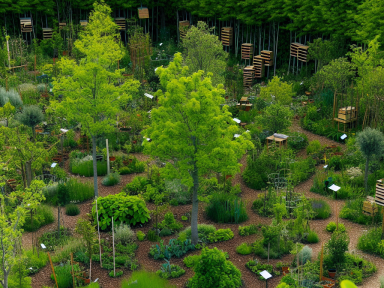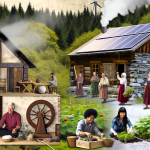Understanding the Edible Forest Garden Concept
In a world where food security is increasingly volatile, creating an edible forest garden stands out not only as a sustainable choice but a necessary step towards self-reliance. The fundamental idea is to mimic natural ecosystems focusing predominantly on trees, shrubs, perennials, and annuals that can feed you and your family—potentially the key to survival in a future strained by food shortages and economic instability.
Steps to Creating Your Edible Forest Garden
Developing your own edible forest garden requires a strategic approach. Here’s how you can start:
1. Choose the Right Location
Start with assessing your space. Ideal forest gardens need to be created where they can thrive—usually away from shadows and buildings. A south-facing slope is typically best as it receives ample sunlight.
2. Design for Permaculture Zones
Map out your garden into zones based on the frequency of human usage and the type of plants’ needs:
- Zone 0: The home or greenhouse.
- Zone 1: High-maintenance plantings closer to your house for ease of access.
- Zone 2: Lesser-maintained plants that still require regular attention.
- Zone 3: The main crop area which might not need daily visits.
- Zone 4: Semi-wild area for foraging and resource gathering.
- Zone 5: A fully wild area left mostly untouched to encourage biodiversity.
3. Soil Preparation and Health
Survival starts in the soil. Enriching your soil with organic matter is crucial for a robust forest garden. Composting and mulching are excellent methods to improve soil fertility and structure while reducing waste.
4. Choosing the Right Plants
Select a mix of native and adaptable plants that can perform multiple functions such as food production, nitrogen fixation, pest management, and attracting beneficial insects. Consider starting with foundational trees like fruit or nut trees and underplanting with bushes, edible perennials, and ground cover species.
Implementing Companion Planting and Biodiversity
Integrating biodiversity through companion planting not only maximizes space but enhances the overall health and yield of your garden. Planting certain species together mimics natural symbiotic relationships that:
- Control pests naturally.
- Enhance pollination benefits.
- Improve soil health and structure.
Remember, diversity equals resilience, a crucial aspect in preparing for future uncertainties.
Maintaining Your Edible Forest Garden
Maintenance is where the principle of ‘observe and interact’ becomes crucial in permaculture. Regular observation helps in understanding the evolving dynamics of your garden, enabling timely interventions that can prevent larger disruptions. The key is to anticipate problems before they become severe:
- Regular pruning keeps plants healthy and productive.
- Monitoring plant health can alert you to nutrient deficiencies or pest invasions early.
- Allowing areas to grow semi-wild can reduce maintenance needs while increasing the habitat for beneficial organisms.
Conclusion: Preparedness is Key
An edible forest garden is more than just a food source; it is a step towards self-sufficiency and resilience in face of the growing unpredictability of global food supplies. Every step from design to maintenance is a move towards gaining autonomy over your food source, ensuring that no matter what the future holds, your dependency on external forces for basic sustenance is minimal. This is not just a garden—it’s a life support system. Prepare now, start small if necessary, and expand as your skills and resources allow. The time to act is before the crisis, not during.




GIPHY App Key not set. Please check settings